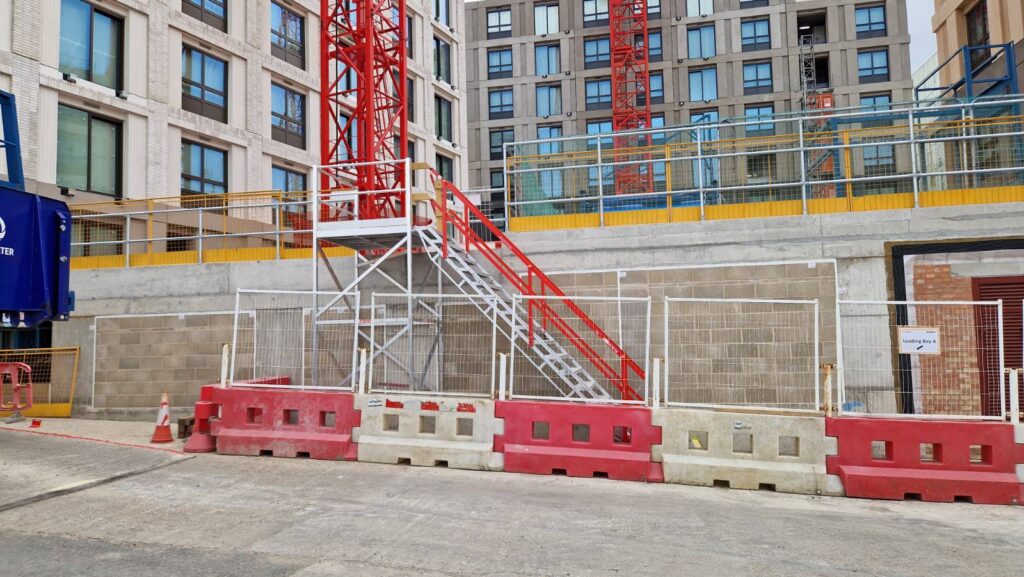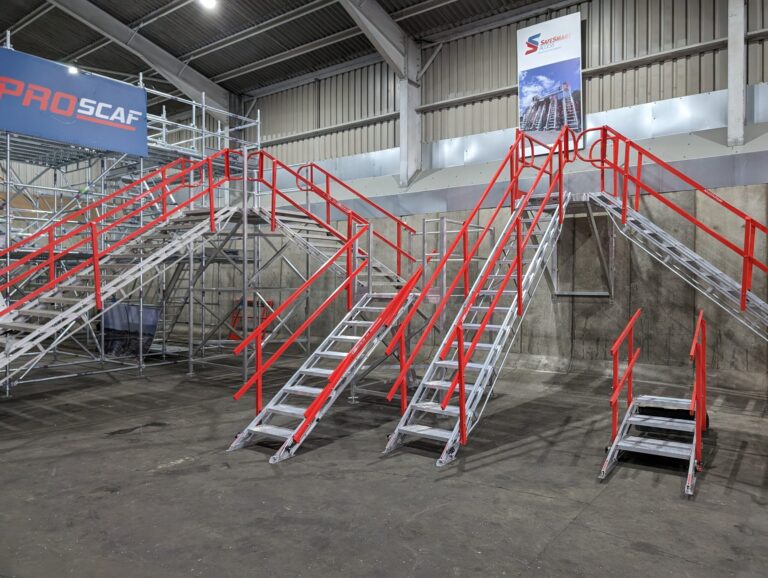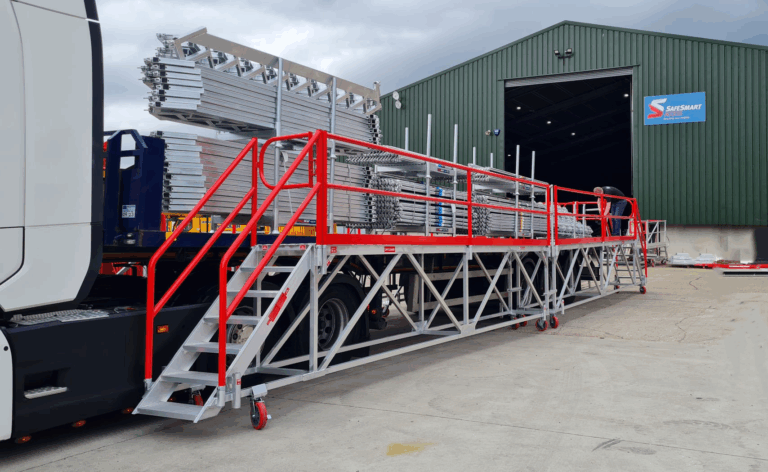
In 2015/16, there were 37 fatalities reported in the UK as a result of falling from height – with 18 individuals being from the construction industry. In addition, an estimated 37,000 individuals suffered non-fatal injuries, such as broken bones or fractured skulls, as a result of construction-related work activity. With this in mind, it is no wonder that falling from height continues to be one of the biggest health and safety concerns in the construction Industry.
In more recent times, the HSE has stated that ladders are at the bottom of the hierarchy of control and that they should only be used if there is not another reasonably practical piece of work equipment available which will prevent or lessen a fall. This has meant that the industry is starting to move away from ladders and towards temporary steps.
Picture a busy and fast-paced site with workers laden with heavy tools and/or large pieces of equipment, climbing up and down ladders, whilst trying to ensure that they are gripping the ladder rungs at the same time. It is no wonder that there are so many fatalities and injuries reported on construction sites and this is why sites are moving towards stair access solutions.
The Safest and Most Practical Solution
Site stairways, which are designed to enable forward facing movement, are often the safest and most cost-efficient solution when it comes to working from height. There are a number of different types of stairs available, from the common ladder through to the more sophisticated scaffolding/access tower.
The UK’s SafeSmart Access specialise in the design and construction of such systems, with a choice of standard range temporary steps as well as capabilities to customise a solution from the ground up, for more challenging obstacles and environments. SafeSmart’s stairs conform to EN12811 which specifies the correct ‘rise and going’, as well as the minimum width, angles and load capacity.
Not only should you consider site stairways from a working at height angle, but also because it is the safest means to escape an emergency situation such as a fire breaking out or if a worker has had an accident. They are also the safest means for the emergency services to safely deal with the situation should the need arise.
• Designed to fit access towers and scaffolds
• Quick and Light to erect
• Flexible and adaptable
• Conforms to BS EN 12811
Their Key Benefits – Flexible, Easy to Install, and Adaptable
Site stairways offer great flexibility. During the early stages of a project, access through the floors isn’t always possible until certain sections have been put in place. When this happens, scaffold and or access towers need to be erected – site stairways can then be placed inside these towers to enable workers to freely move up and down the building.
Another benefit is that they are very quick and easy to install. Within a matter of minutes, they can be secured in place as specified in EN12811, as opposed to some traditional timber temporary steps, which can be cumbersome and susceptible to the elements and repeated weight loading.
SafeSmart’s stairways can be set up on table forms, in service ducts and other on-site areas. They can also be used in-place of the buildings permanent stairs in order to protect them from wear and tear from the general construction work being carried out. In addition, stairways can ben pre-joined to the required length before transportation which means that they can be assembled on-site easily.
Adaptability is another advantage of site stairways too. Integral double handrails adapt automatically to the right height, and the required angle – whatever the angle of the stair. The handrails fold flat for transport and are simply unfolded for use.
Cost Effective and Safe
For certain developments, site managers should also consider stairways in place of scaffold or access towers. Whilst scaffold and access towers can be a good practical solution, they require trained installers, which can be costly and inflexible, plus potentially the need for multiple transport journeys. Scaffold and access towers can also take up a very large footprint due to the amount of components which can be impractical for inner-city developments.
Safety is assured when using site stairways. Deep section stringers ensure great rigidity in use. Wide, perforated non-slip treads are very strong, each tread being able to support two average-sized people, while the standard fit scaffold hooks have neat gravity locks.
They are the safest means whilst working on difficult terrain such as slopes, banks or pitched roofs, since ladders and/or scaffolding and access towers are not appropriate. Site stairways can be securely fastened to the ground, whatever the weather conditions. Due to their perforated steps, they won’t become slippery.
Maintenance and Inspections
All our stair access solutions conform to the European Standard EN 12811. We recommend a fortnightly inspection, but due to the robust construction of stairways, very little maintenance is required.






